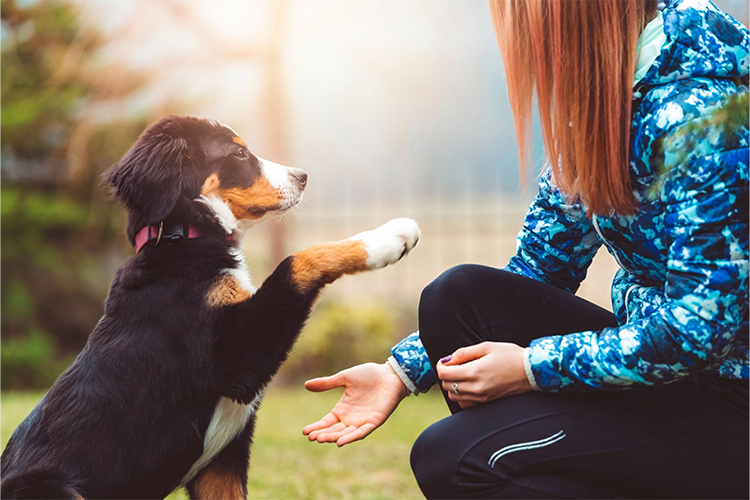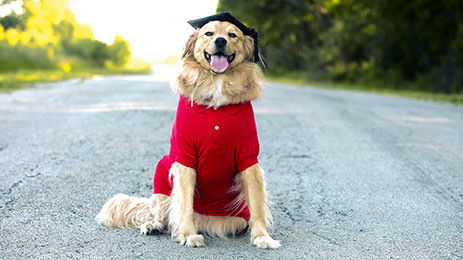Vital Tips for Successful Dog Training: A Guide for Pet Owners
Efficient pet training is a multifaceted procedure that requires a calculated strategy tailored to both the pet dog's personality and the proprietor's goals. Secret components such as developing consistent commands, employing positive support, and facilitating very early socializing play critical roles in cultivating a well-adjusted canine buddy. Nevertheless, lots of pet dog proprietors experience challenges that can hinder progression, resulting in aggravation and uncertainty. Recognizing how to browse these barriers can significantly improve the training experience, ultimately changing the connection between owner and pet dog. What are the essential approaches that can be utilized to make certain success in this endeavor?
Comprehending Dog Behavior
Recognizing dog actions is crucial for efficient training and cultivating an unified partnership between dogs and their owners. Pet dogs communicate mostly via body language, vocalizations, and activities, making it important for owners to analyze these signals accurately. Acknowledging a pet dog's position, tail position, and ear alignment can give insights right into its mood. A wagging tail does not always indicate joy; it can additionally signal exhilaration or anxiousness.

Socializing plays a significant role in canine behavior; exposure to various environments, people, and various other animals can considerably impact a pet's personality. Furthermore, variables such as breed characteristics and individual character should assist training techniques, as some types might have certain behavior traits that require tailored approaches. By understanding these components, owners can create a helpful environment that motivates favorable habits, causing successful training results and a much deeper bond with their family pets.
Developing Consistent Commands
Reliable communication with your pet dog starts with establishing regular commands. This fundamental aspect of training is important for cultivating understanding in between you and your pet dog. Consistency in the commands you utilize makes certain that your dog can reliably connect particular words or expressions with the preferred habits.
When picking commands, pick clear, distinctive words that are simple to state and distinguish from each other. Prevent utilizing similar-sounding commands that may confuse your dog. Utilizing "rest" and "stay" is proper, however "rest" and "struck" might lead to misconceptions.
Additionally, maintain the exact same tone and volume for every command. Pets are sensitive to singing hints, so varying your tone can create complication.
It is equally important to make certain that all relative are on the same web page relating to the commands utilized. A united front in command usage will certainly stop mixed signals and enhance the understanding procedure.
Positive Reinforcement Strategies
The power of positive support in pet training depends on its capability to urge desired behaviors with rewards and appreciation. This strategy is based in the principle that behaviors followed by favorable outcomes are more probable to be repeated. By integrating positive support into your training program, you can properly form your canine's actions in a constructive fashion.
To carry out positive support, it's important to determine what inspires your pet, whether it be treats, playthings, or spoken praise. When your pet carries out a desired action, such as resting on command, right away reward them with a treat or affection. This association between the command and the positive result strengthens their understanding.
It's critical to timing the benefits correctly; delivering the support within secs of the desired behavior aids your canine make the link (dog training). Additionally, consistency is essential-- ensure that all relative make use of the exact same commands and reward systems to prevent confusion

Gradually, you can minimize the regularity of treats as your pet dog discovers the actions, transitioning to commend or periodic incentives. This approach not only fosters a solid bond in between you and your dog however also promotes a favorable knowing atmosphere, making educating an enjoyable experience for both.
Socialization and Communication
Constantly revealing your canine to a selection of environments, individuals, and various other pets is critical for their social development. Socialization ought to start early, ideally throughout the essential home window of 3 to 14 weeks, when young puppies are link most receptive to new experiences. Older pets can likewise profit from ongoing socialization efforts.
Introduce your pet to various setups, such as parks, pet-friendly stores, and urban locations. This exposure assists them adjust to various stimuli, minimizing anxiousness and worry responses. Encourage positive interactions with other pet dogs and people, making sure that these experiences are secure and regulated to foster confidence.
Make use of organized playdates with well-mannered canines, as this can improve your pet's social skills and educate them proper behavior. Obedience classes and training sessions likewise give outstanding opportunities for socializing, enabling your canine to interact with others in a monitored environment.
Screen your pet dog's body language during interactions, as this will certainly help you evaluate their convenience level. Gradually increase exposure to even more difficult scenarios while ensuring that each experience is favorable. A well-socialized pet is more probable to exhibit balanced actions, making them a delight to have in any type of setting.
Attending To Typical Training Challenges
Every canine proprietor will encounter training challenges at some time, no matter their pet dog's age or socializing level. Recognizing usual problems such my link as stubbornness, diversions, informative post and fearfulness can assist in creating reliable approaches for renovation.

Diversions throughout training sessions can derail emphasis. To battle this, start training in a silent atmosphere with very little stimuli. Slowly present diversions as the pet dog comes to be much more skilled in commands. Short, regular training sessions are also efficient in keeping attention.
Fearfulness can hinder a dog's discovering procedure. Gradual desensitization to the resource of anxiety, combined with favorable reinforcement, can help ease anxiety. Patience is essential; never compel a dog into a scenario that creates distress, as this may exacerbate the problem.
Inevitably, understanding and addressing these common challenges with a structured method will foster a much more efficient training experience, strengthening the bond between canine and owner while promoting reliable knowing.
Conclusion
In recap, effective canine training relies upon an extensive understanding of canine behavior, the establishment of constant commands, and the application of positive reinforcement techniques. Socializing plays a critical function in creating well-adjusted animals, while attending to common training challenges calls for patience and flexibility. By applying these crucial strategies, pet proprietors can promote a strong bond with their pets and advertise desirable behaviors, inevitably bring about a harmonious partnership between people and their canine friends.
Comprehending dog behavior is crucial for reliable training and fostering a harmonious partnership between canines and their proprietors.Socialization plays a significant function in canine habits; direct exposure to various settings, individuals, and other animals can dramatically impact a pet's character.The power of positive support in canine training lies in its capability to urge wanted actions via benefits and praise. By incorporating positive reinforcement into your training routine, you can properly form your dog's behavior in a positive fashion.
In summary, successful pet dog training depends on a comprehensive understanding of canine habits, the establishment of constant commands, and the application of positive support techniques.
Comments on “Recognizing Dog Body Language Throughout Dog Training”